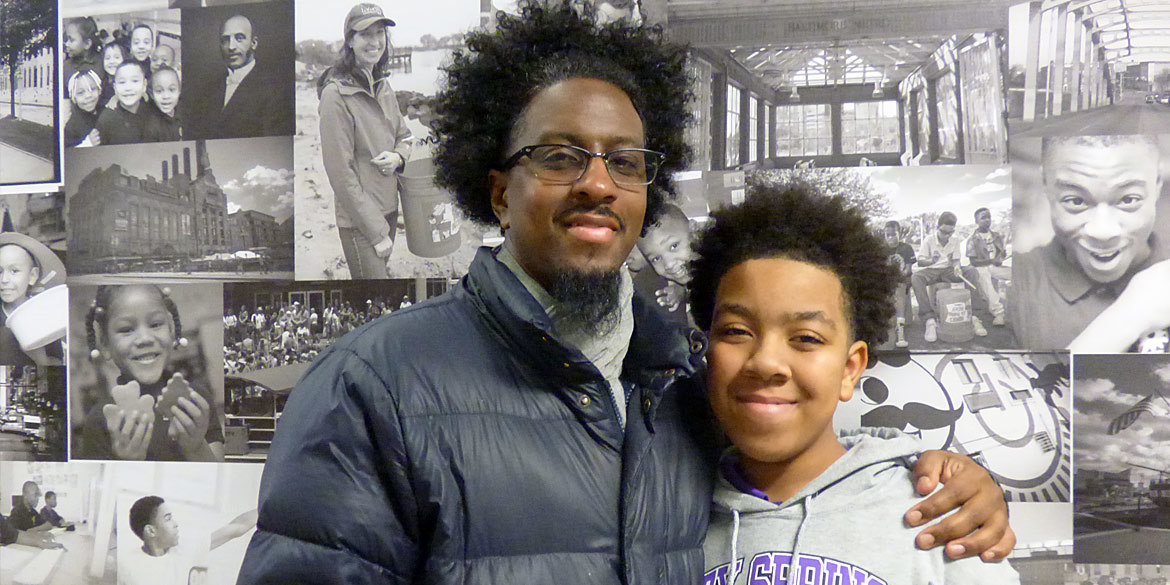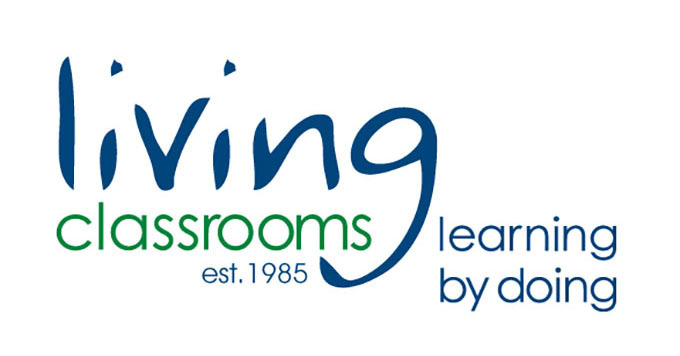Partner Content
In the 1990s, Travis Street was growing up in Perkins Homes, Baltimore’s largest public housing community. As a child, Travis says, “I never knew I was poor.” He played with his friends, went to school, and spent a lot of time at the local community center. But when funding cuts closed the center, Travis and his friends were left with no safe outlet for sports, activities, and mentorship. It was only then that Travis realized he lived in poverty. Over the next decade, he saw his friends get caught up in the violent drug culture that characterized Baltimore at that time and was immortalized on television shows such as Homicide and The Wire, which gave people nationwide a less-than-attractive view of the city. However, Travis was lucky—he had a family and support network that kept him out of trouble, and his experiences led him to understand that his community needed help. He was determined to be a force for change.
Today, Travis works for Baltimore nonprofit Living Classrooms Foundation as Director of Family and Community Engagement out of the UA House at Fayette in Pleasant View Gardens. The UA House is one of four Living Classrooms “community hubs” in East Baltimore that have been established with the goal to disrupt generational poverty through a variety of education, workforce development, and health/violence prevention opportunities.
Many Baltimore neighborhoods still struggle in the shadow of the drug and gang culture that peaked in the 1990s. Following nationwide trends over the past few years, the city has again experienced a rise in homicides and violent crime—with the city’s youth being a particularly threatened demographic, as they become both victims and perpetrators. To combat the many forces that lead youth down the wrong path, Living Classrooms has spent more than three decades working diligently with residents, city leadership, other community organizations, and committed funders to develop solutions to some of Baltimore’s most persistent problems.
One prominent response has been the development of the Target Investment Zone in East Baltimore, a place-based comprehensive strategy aimed at over 40,000 residents in a 2.5-square-mile area that offers holistic Living Classrooms services not only at community hubs, but also through two Early Childhood Centers, a public charter middle school (The Crossroads School), workforce training programs for youth and adults, free health and fitness programs, and violence-prevention programs designed to reduce homicides and shootings through conflict mediation.
Thanks to recent funding from Legg Mason and the Charles T. Bauer Foundation, two of Living Classrooms Foundation’s community hubs, the POWER House in Perkins Homes and the UA House at Fayette, are now open seven days a week, daytime and evenings. This gives children and youth of all ages safe havens to play sports, participate in enriching academic-focused afterschool and weekend programs, access healthy meals, explore their musical talents, and connect with caring adult mentors like Travis.
Living Classrooms’ diverse workforce-development opportunities in the Target Investment Zone place a special emphasis on serving adjudicated and other disconnected youth, as well as adults returning to the community from incarceration. Using training platforms including carpentry, landscaping, maintenance, clean energy, and information technology, these programs are lifting individuals out of poverty and helping them create a sustainable future for themselves and their families. One such program, Fresh Start, is a full-time commitment structured like a work schedule that provides out-of-school teens with job training and academic remediation.
Current student Tykiem recently told us, “Fresh Start changed me a lot. I was definitely going down the wrong path …I always thought about being a leader, but I never knew what it took to be one, what that meant, until I came here and learned the skills.”
Not far from Living Classrooms’ community hubs, the Foundation is combating localized violence as one of four organizations operating the Safe Streets initiative in partnership with Baltimore City. After more than a decade as a Safe Streets provider in McElderry Park, Living Classrooms’ “Violence Interrupters” have achieved significant decreases in homicides and shootings, including a 543-day stretch from 2016–2018 in which there were no homicides. In 2019, Living Classrooms has been chosen by the city to begin implementing another Safe Streets site in Belair-Edison, as a response to a recent rise in crime.
These initiatives are fostering individual successes that generate a ripple effect out to children, families, neighborhoods, and beyond. As for Travis Street—he will never forget where he came from, but he also wants to remind us all that he is still here. Only now, he is working with a team of dedicated Living Classrooms staff, residents, and volunteers to create a firm foundation today for a thriving future in a safer, stronger, and healthier Baltimore.
We invite you to learn more about Living Classrooms and its work throughout Baltimore by visiting Facebook, Instagram,Twitter, or YouTube.


